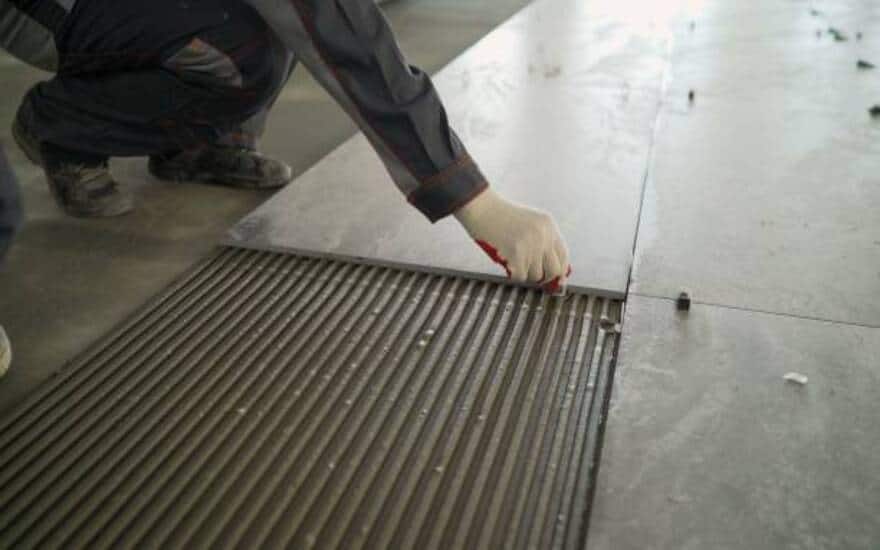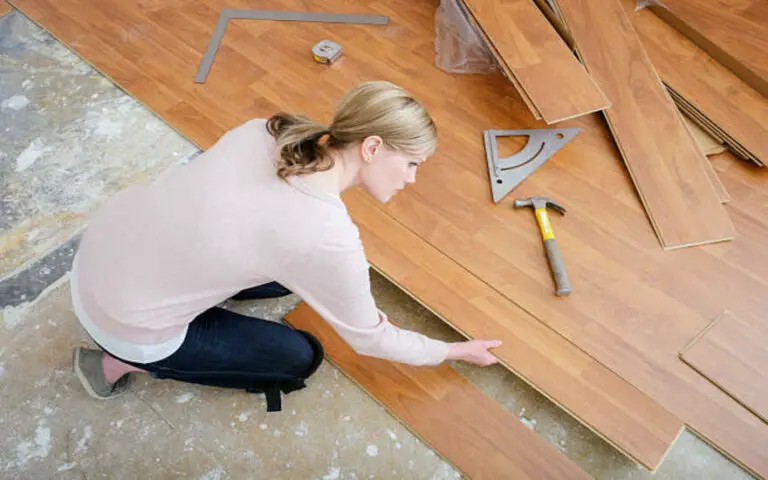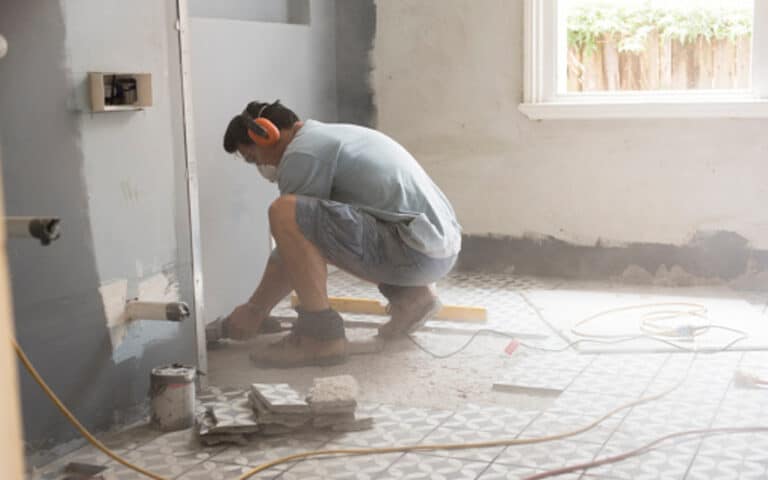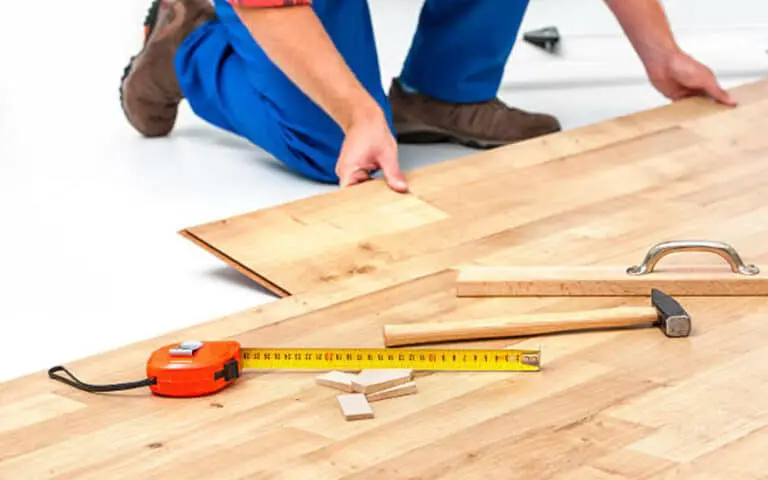Do you experience problems with the laminate floor staying together? If so, don’t worry—you’re not alone! In this blog post, we’ll discuss the common causes of laminate flooring separation and what you can do to fix it.
Why won’t my laminate floor stay together?
There are several potential culprits when understanding why your laminate floor won’t stay together. Warped or flawed pieces of laminate, a heaved or uneven subfloor, debris on the subfloor or underlayment, or even debris trapped in the grooves of the flooring can all cause your floor to not lock together properly.
It’s important to inspect each of these areas thoroughly to determine the cause and be able to properly fix the issue.

How To Fix It?
Once you understand why your laminate floor won’t stay together, you can start making the necessary repairs. One of the best ways to fix this issue is to check the tongue and groove alignment of the planks.
Make sure they fit together properly and that there are no irregularities or gaps. Additionally, ensure that the floor has been installed on an even, flat surface. If it has been installed on a heaving or uneven subfloor, this could cause your planks to not stay locked in place.
It would be best if you also inspected the area for any moisture or water damage, as this could be causing your boards to expand and not fit together properly. Finally, try tightening the boards with a tapping block to make them fit better.
1. Check the tongue and groove alignment.
Before attempting any of the steps outlined in this blog, check your laminate flooring planks’ tongue and groove alignment.
Often, misaligned planks will be the root cause of why your floor won’t stay together. If the planks are misaligned, try to adjust them until they gently fit together. If the problem continues, you may need to replace the misaligned plank or switch to a different type of flooring.
2. Check if the floor has been installed on an uneven surface.
If you’ve checked the alignment of the tongue and grooves and found no issues, then it’s time to check if the floor has been installed on an uneven surface. Uneven surfaces can cause the laminate planks to not stay together properly and cause gaps between the boards.
To fix this, you must ensure that the subfloor is completely level before installing the laminate flooring. You can use a spirit level to check if it’s even. If not, you’ll need to use a self-leveling compound or foam to fill out any low spots. After that, you should be able to install your laminate flooring properly and have it stay together.
3. Inspect for moisture and water damage
When inspecting for moisture and water damage, look for any signs of warping, discoloration, or cracking. Additionally, check for mold or mildew growth, as this can signify a moisture issue.
If you detect moisture or water damage, it is important to address it immediately, as this can cause serious damage to the laminate flooring. If you cannot fix the issue yourself, it is best to seek professional help.
4. Tighten the boards with a tapping block
If the above solutions don’t work, your laminate flooring needs to be tightened. A tapping block or mallet can gently tap the boards together, allowing them to fit snugly against each other.
This is an effective way of ensuring that your laminate flooring is properly locked in place and won’t move around. Do this gently and avoid using too much force, which can damage the boards.
5. Check for any uneven gaps between the boards.
If you find any uneven gaps between the boards, you can fix them using a mallet and tapping the block. This will help to lock them together and even out the gaps. If this doesn’t work, you may need to replace the affected boards and start the installation process again.
Additionally, ensure that you inspect the laminate planks before installing them and choose the right type of adhesive for your flooring. Keeping your floor clean and dry and allowing for sufficient expansion space is also important for a successful installation.
Avoid Common Problems when Installing Laminate Flooring
When installing laminate flooring, it’s important to avoid some of the common problems. Before you begin the installation process, inspect the laminate planks for any damage. Choose the right adhesive for the job, as this can help ensure that your flooring stays together.
Keeping your floor clean and dry is also important, as moisture can cause the pieces to come apart. Lastly, leave sufficient expansion space between walls and other obstacles. This will help ensure that your flooring has room to expand and contract with seasonal changes in temperature and humidity.
These steps can help you avoid common problems when installing laminate flooring and ensure that your flooring stays together for years.
1. Inspect the laminate planks before installation
It is important to inspect the laminate planks before installing them. Make sure no warped or flawed pieces won’t snap into each other. Check for any debris trapped in the grooves or between the planks, and make sure the subfloor is even and free from debris.
When laying the laminate flooring, it is essential to ensure that the appropriate glue is used. Be sure to keep the floor clean and dry and allow for sufficient expansion space. Lastly, ensure you align the planks correctly, so they fit together properly. You can avoid many common installation problems with laminate flooring by taking all these steps.
2. Choose the right adhesive.
Choosing the right adhesive is important when installing laminate flooring. It is essential to use the right product and apply it correctly. When choosing an adhesive, make sure it is specifically designed with laminate flooring.
It should also be compatible with your subfloor and the environment in which it will be used. Additionally, too much adhesive can cause the boards to swell and warp, so only use the recommended amount. Taking the time to choose the right adhesive and use it properly will help ensure your flooring looks great and lasts for years.
3. Keep the floor clean and dry.
Keeping your floor clean and dry is essential when installing laminate flooring. It may become more challenging to click the individual planks of flooring together if dust, grime, and other particles have accumulated in the grooves of the flooring.
Make sure to vacuum or sweep the area before beginning your installation. You should also ensure that there is no water damage or moisture in the area, as this can prevent the pieces from locking together properly. Avoiding common problems when installing laminate flooring can help to ensure that your installation goes smoothly and your new floor will look beautiful for years to come.
4. Allow sufficient expansion space.
When installing laminate flooring, leaving enough room to expand is also important. This is especially important in high-humidity areas or rooms exposed to a lot of moisture. It would help if you left a gap of at least 6 millimeters between the walls of the room and the laminate planks.
This will help to prevent buckling and warping of the flooring due to expansion and contraction. Additionally, it’s important to inspect the laminate planks before installation and choose the right adhesive for the job. Keeping the floor clean and dry will also help prevent potential problems. Following these steps will help you to avoid common issues when installing laminate flooring.
5. Ensure correct alignment of planks
Having the correct alignment of planks is essential for a good finish and for the laminate floor to stay together. This is why it’s important to follow the manufacturer’s instructions for installation. Always examine the flooring boards before installing laminate flooring to ensure they are not damaged or deformed.
This will help you prevent frequent difficulties when installing laminate flooring. Choose the right adhesive and keep the floor clean and dry. Additionally, it’s important to allow sufficient expansion space between walls and other objects, as this helps to ensure that the planks fit together properly and don’t pull apart.
By taking these steps, you’ll be able to ensure a beautiful finish and that your laminate floor stays together.
wrap Up
It is crucial to install laminate flooring properly to guarantee that it does not shift over time and continues to look wonderful for many years. It is crucial to verify the planks before installation, pick the appropriate glue, maintain the floor clean and dry, give adequate expansion room, and ensure that the planks are correctly aligned to prevent typical difficulties such as laminate pieces that won’t snap together.
Additionally, you should check the tongue and groove alignment, inspect for moisture and water damage, tighten the boards with a tapping block, and check for any uneven gaps between the boards. With a little care and attention during installation, you’ll surely have a beautiful laminate floor that will stay in place for years to come.






